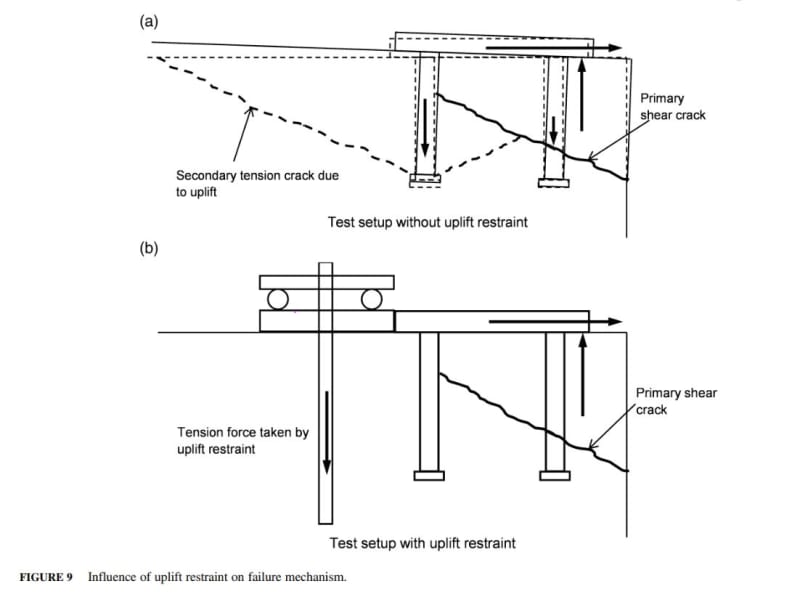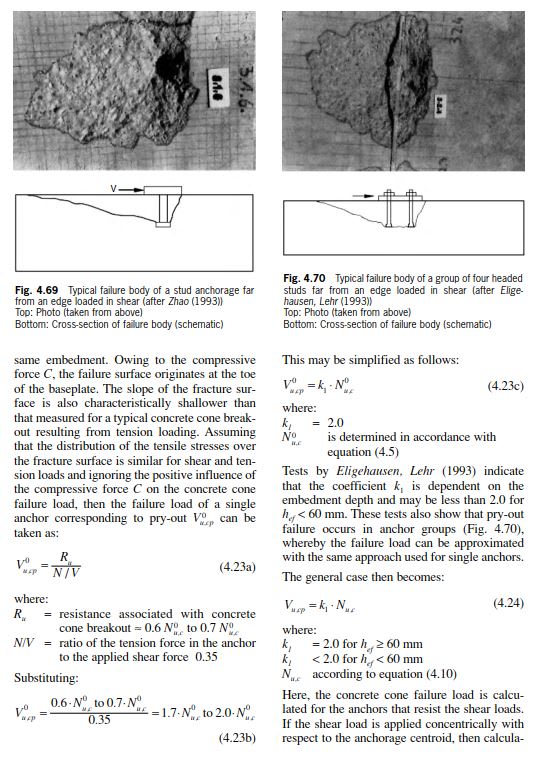EngDM
Structural
- Aug 10, 2021
- 682
Not sure if this is how it works for others, but where I practice pre-engineered building suppliers provide us with reactions and the EOR designs the foundation for these loads. I have several frame lines with insane kickout forces (700kN) and the pre-eng supplier has provided (10)-1 1/4"Ø anchor bolts. The problem is, these bolts do not work in pryout even with taking 3 out of 4 edge distances as code max 1.5hef and playing with the hef. One side has to remain a set edge distance to align with building edge (edge of grade beam).
Question is, what kind of detail can I provide that effectively eliminates pryout? thread507-455245 seems to give differing opinions of if you can reinforce for pryout, but I'm wondering if I could possible add weldable rebar or some other type of restraint to relieve the shear. So far, any anchor designer software I try to run in does not consider pryout as a tension reinforecable failure which leads me to believe that there is no real way to "reinforce" the concrete for pryout by adding ties or vertical rebar.
I'm solely solving pryout at the moment. We are considering tie-rods from frame to frame or dywidag anchors to deal with the shear loads.
Edit: I checked it with infinite edge distance to trigger 1.5hef as my area on all sides and it still fails.
Question is, what kind of detail can I provide that effectively eliminates pryout? thread507-455245 seems to give differing opinions of if you can reinforce for pryout, but I'm wondering if I could possible add weldable rebar or some other type of restraint to relieve the shear. So far, any anchor designer software I try to run in does not consider pryout as a tension reinforecable failure which leads me to believe that there is no real way to "reinforce" the concrete for pryout by adding ties or vertical rebar.
I'm solely solving pryout at the moment. We are considering tie-rods from frame to frame or dywidag anchors to deal with the shear loads.
Edit: I checked it with infinite edge distance to trigger 1.5hef as my area on all sides and it still fails.




